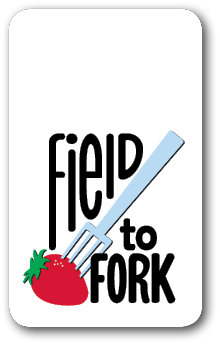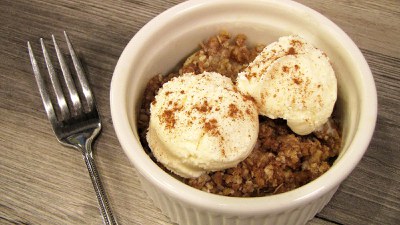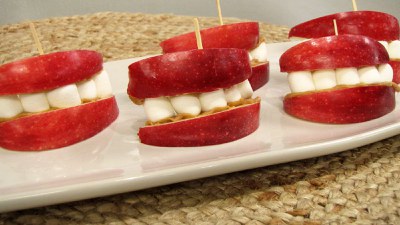Field to Fork Apples! (FN1792, Reviewed Jan. 2020)

Growing
When purchasing apple trees, buy them at local garden centers. Local garden centers understand which cultivars are best suited for your area. You also can purchase from mail-order nurseries, but make sure the cultivar is hardy to your growing zone.
Apple trees can take from two to five years to flower and produce fruit. Apples require a compatible donor tree as a pollinator to produce fruit. You can accomplish this by planting two different apple cultivars that bloom at the same time or with the presence of a blooming ornamental crab tree nearby.
Typically in the urban environment, you don’t need two different trees because plenty of compatible edible or ornamental apples trees are in neighboring yards.
If not properly pruned or thinned, apple trees may bear fruit every two years. Proper branch pruning or thinning the fruit within the first six weeks after bloom will remedy this.
Note: Avoid dangerous situations. Call your utility company before you dig to plant trees. This is required by law!
See the NDSU Extension Service publication “From the Garden or Orchard to the Table: Jams and Jellies from North Dakota Fruits” (FN590) for more information.
Storage
Apples ripen six to 10 times faster when stored at room temperature. To extend their shelf life, store apples in a cool, dark place. If you store them in the refrigerator, they will stay crisp and juicy longer.
Preservation
Freezing: For best quality, prevent the apple flesh from browning with commercial ascorbic acid mixtures made according to directions. You also can use lemon or other fruit juice.
Dissolve ½ teaspoon ascorbic acid in 3 tablespoons water. Sprinkle over the fruit. Place slices in a single layer in steamer; steam 1½ to two minutes, depending on the thickness of the slices. Cool in cold water; drain. Pack apples into containers and press fruit down. Leave head space. Label with contents and date, seal and freeze.
You can freeze your apple slices for use in pie or cobblers. Arrange steamed slices in a pie plate as for a pie. Put the filled plate into a plastic bag and freeze. The solid chunk of slices may be removed from the plate when frozen. Wrap the chunk tightly and return it to the freezer. At pie-making time, lay the pie-shaped chunk of slices in your pastry. Put on the sugar and seasonings, top with a crust and bake.
Drying: To dry apples, rinse, pare and core. Cut in rings or slices c to ¼ inch thick or cut in quarters or eighths. Dip in ascorbic acid or another anti-browning solution for 10 minutes. Remove from solution and drain well. Arrange in single layer on trays. Dry until soft, pliable and leathery; it should not have a moist area in center when cut (six to 12 hours).
See the NDSU Extension Service publications “Freezing Fruits” (FN182) to learn more about freezing apples, “Jams, Jellies and Spreads” (FN172) for directions to make apple jelly and “Making Fruit Leathers” (FN1586).
Nutrition
One medium apple (3 inches in diameter) has 95 calories, 0 grams (g) fat, 0.4 g protein, 25 g carbohydrate and 4 g fiber, plus several vitamins and minerals. Eat the peeling for the maximum health benefits because most of the fiber and many disease-fighting antioxidants are in the peel.
Recipes

Apple Crisp for One
Optional toppings (ice cream, whipped topping)
Rinse, peel and thinly slice apple, place in microwave-safe dish (ramekin, bowl, etc.) and toss with lemon juice. In a separate bowl, combine the remaining ingredients, using a fork to cut in the butter for the crumb topping. Place the crumb topping on the apple slices. Microwave the mixture for 60 to 90 seconds until apples are tender. Serve plain or with a scoop of vanilla ice cream or whipped topping.
Makes one serving. Each serving has 370 calories, 13 g fat, 3 g protein, 66 g carbohydrate, 6 g fiber and 0 mg sodium.

Apple Smiles
Toothpicks
Rinse apple under running water, core and slice. To prevent browning, sprinkle the apple slices with lemon juice if not serving immediately. Spread peanut butter on one side of each apple slice. Place four to eight (depending on the size of the apple) miniature marshmallows on one apple slice and then lay another apple slice, peanut butter side down, on top. Secure with a toothpick until ready to eat.
Makes four servings. Each serving has 60 calories, 2 g fat, 1 g protein, 11 g carbohydrate, 1 g fiber and 20 mg sodium.
Key to abbreviations
c. = cup oz. = ounce
tsp. = teaspoon g = gram
Tbsp. = tablespoon mg = milligram
Funding for this publication was made possible by the U.S. Department of Agriculture’s Agricultural Marketing Service through grant AM170100XXXXG005.
Its contents are solely the responsibility of the authors and do not necessarily represent the official views of the USDA.
County commissions, North Dakota State University and U.S. Department of Agriculture cooperating. NDSU does not discriminate in its programs and activities on the basis of age, color, gender expression/identity, genetic information, marital status, national origin, participation in lawful off-campus activity, physical or mental disability, pregnancy, public assistance status, race, religion, sex, sexual orientation, spousal relationship to current employee, or veteran status, as applicable. Direct inquiries to Vice Provost for Title IX/ADA Coordinator, Old Main 201, NDSU Main Campus, 701-231-7708, ndsu.eoaa@ndsu.edu. This publication will be made available in alternative formats for people with disabilities upon request, 701-231-7881. 2.5M-1-20

